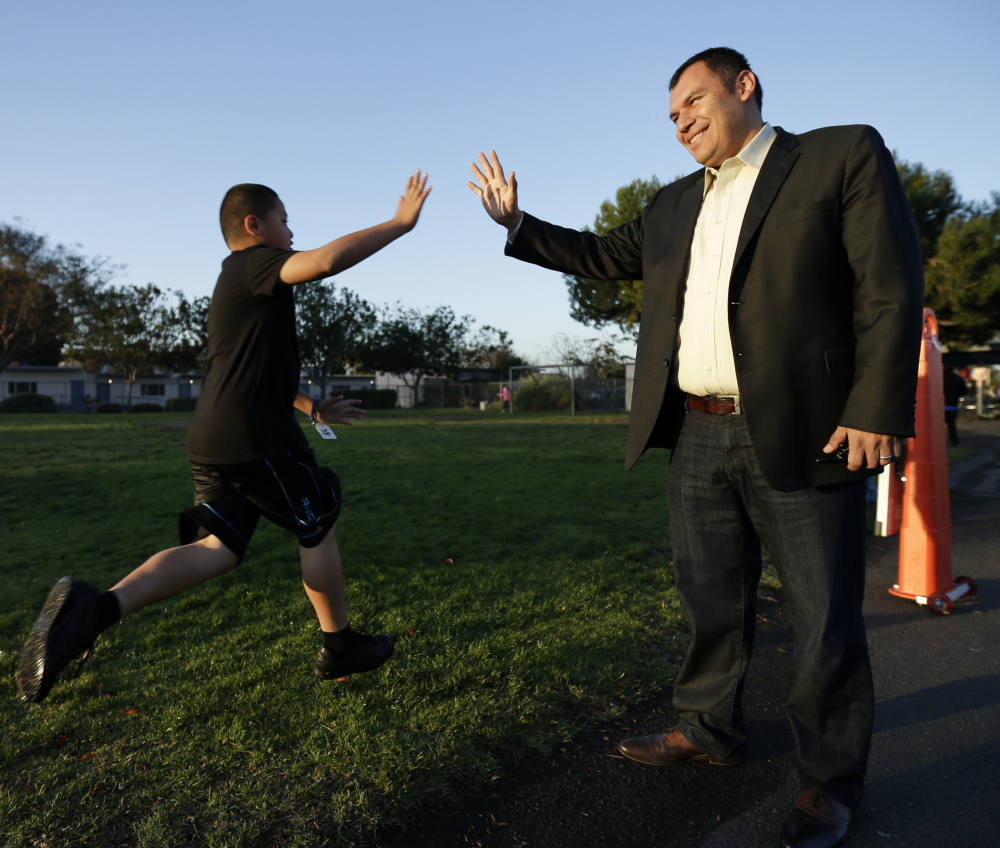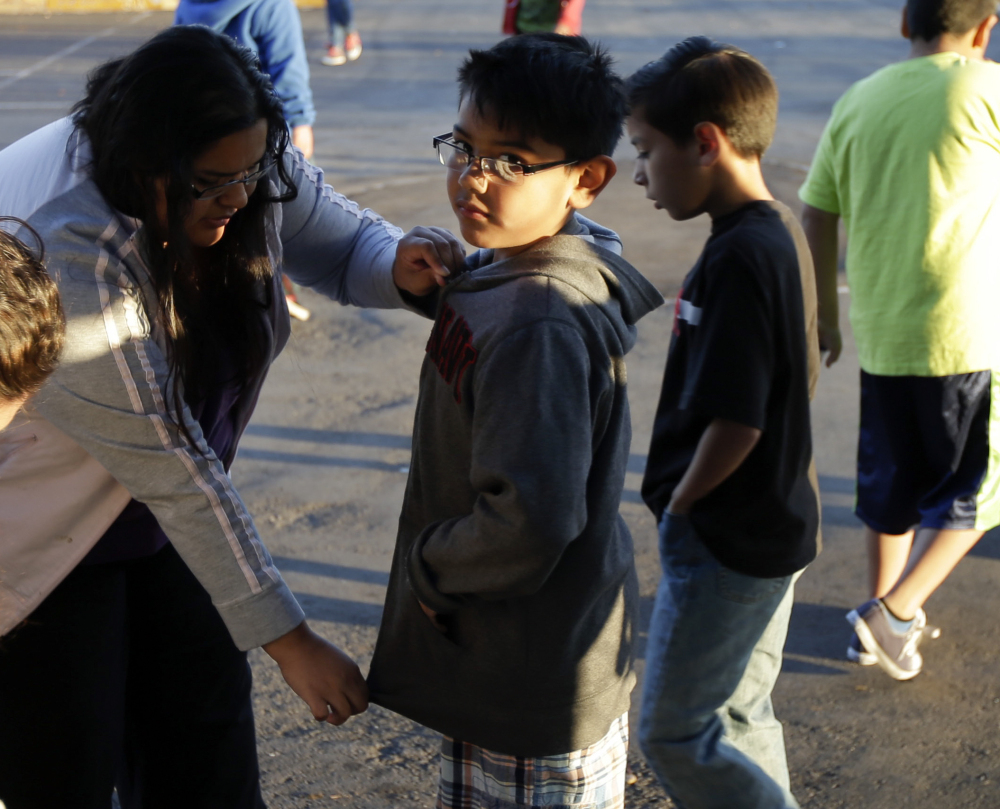CHULA VISTA, Calif. — The Chula Vista school district not only measures the academic progress of Marina Beltran’s second-grader, it also measures her son’s body fat.
Every two years, Antonio Beltran, like his classmates, steps on a scale. Trained district personnel also measure his height and then use the two figures to calculate his body mass index, an indicator of body fat.
The calculation isn’t reported to Beltran or her son, who cannot see the readout on the scale that has a remote display. Instead it’s used by the district to collect local data on children’s weight.
Beltran supports her son’s school in measuring students because the data has brought in help to address obesity, which can lead to diabetes and other illnesses tied to a lifetime of poor habits.
But the practice hasn’t been embraced everywhere.
Other school districts have angered parents and eating disorder groups by conducting screenings to identify overweight children and send home what critics call obesity report cards or “fat letters.”
Amid the nation’s childhood obesity epidemic, schools in nearly a quarter of all states record body mass index scores, measuring hundreds of thousands of students.
DIFFERENT APPROACHES
Some, like the Chula Vista Elementary School District, do what is known as surveillance, in which students are measured to identify how many are at risk for weight-related health problems but they remain anonymous. Other districts do screenings to track the weight of individual students and notify parents whose children are classified at an unhealthy weight.
Chula Vista is being touted for its methods that have resulted in motivating the community to take action. When nearly 25,000 students were measured in 2010, it discovered about 40 percent of its children were obese or overweight.
Officials used the data to make a color-coded obesity map of the district and showed the community. Instead of creating a stir, the information acted as a distress call, bringing in help. Schools boosted partnerships with doctors. They planted gardens, banned cupcakes at school birthdays, and tracked kids’ activity levels.
“I’ve seen a dramatic change,” Beltran said of her son, who now eats carrots and looks forward to running club.
Chula Vista’s program – which measures students in grades kindergarten through sixth – differs from California’s state-mandated program for fifth-, seventh- and ninth-graders that screens students and notifies parents of the scores.
Vicki Greenleaf said she received what she called a “fat letter” in the mail last summer from the Los Angeles Unified School District. Her daughter does Brazilian martial arts four times a week and is built like Olympic gold medalist Mary Lou Retton, but was classified as overweight by the state-mandated body mass index screening program, she said.
Critics say body mass index can be misleading for muscular body types.
THREAT TO SELF-ESTEEM?
Greenleaf, a spokeswoman for the National Eating Disorders Association, said her daughter knew about the screening’s limitations but other children’s self-esteem could be seriously harmed by such notifications.
“I think those letters make kids feel bad about themselves,” she said. “For a kid that is predisposed to an eating disorder, those are the kind of triggers that can set it off.”
Massachusetts in October stopped requiring schools to notify parents when a child scores high after receiving reports that the data was not safeguarded enough, “leading to alarm, confusion or embarrassment,” according to the state’s public health department. Parents can request the results.
“The current policies to protect student data are pretty inconsistent and at times woefully inadequate,” said James Steyer, CEO of the San Francisco-based nonprofit Common Sense Media, which reviews technology and privacy.
LACK OF CONSENSUS
Little is known about the outcomes of school-based measurement programs, including effects on attitudes and behaviors of kids and their families. As a result, no consensus exists on their utility, according to the Centers for Disease Control and Prevention.
Schools, over medical clinics, have the advantage of access to the largest number of children. The local data is valuable to researchers who have had a dearth of childhood obesity information, and it can be used to pinpoint places that need help, said Dr. Matt Longjohn, an assistant adjunct professor in the Departments of Pediatrics and Preventive Medicine at Northwestern University’s Feinberg School of Medicine.
“If parents knew the facts – that obesity solutions may be being applied to their communities inequitably or inadequately without this data – they would support this,” Longjohn said.
Send questions/comments to the editors.



